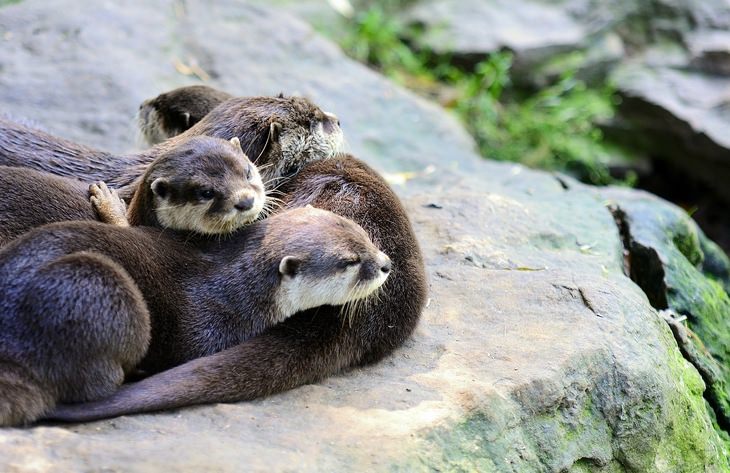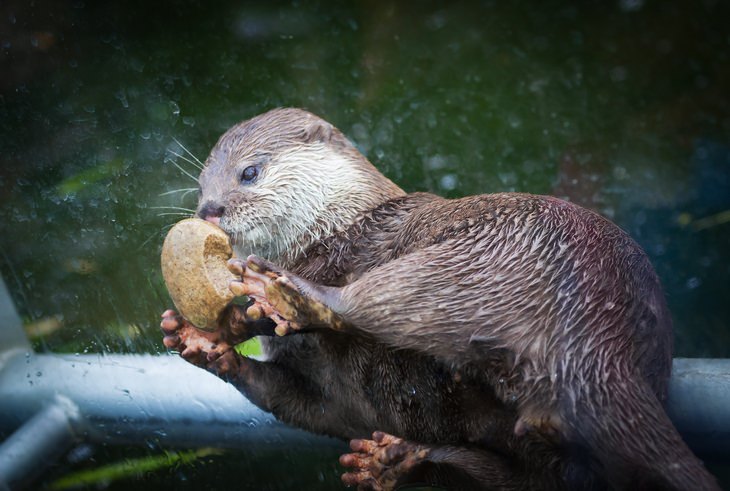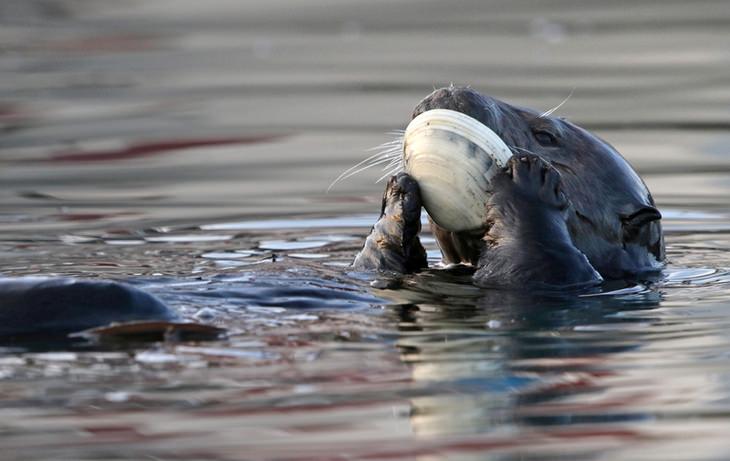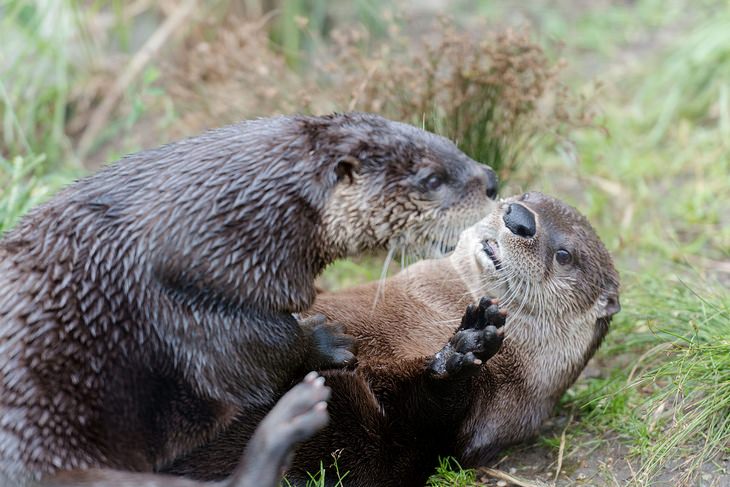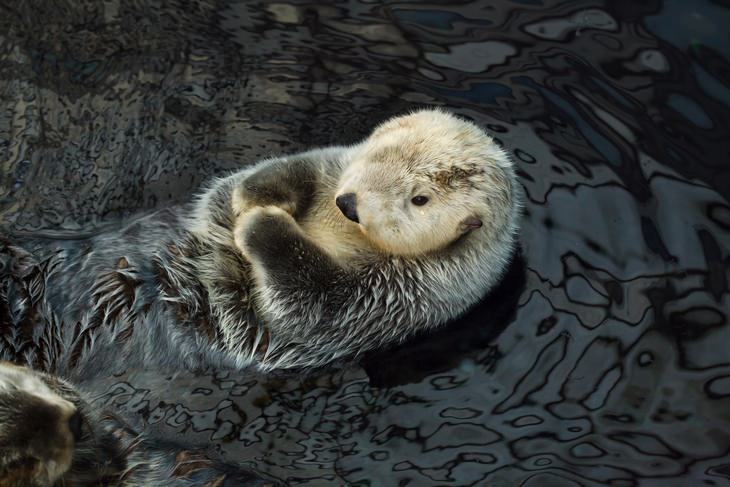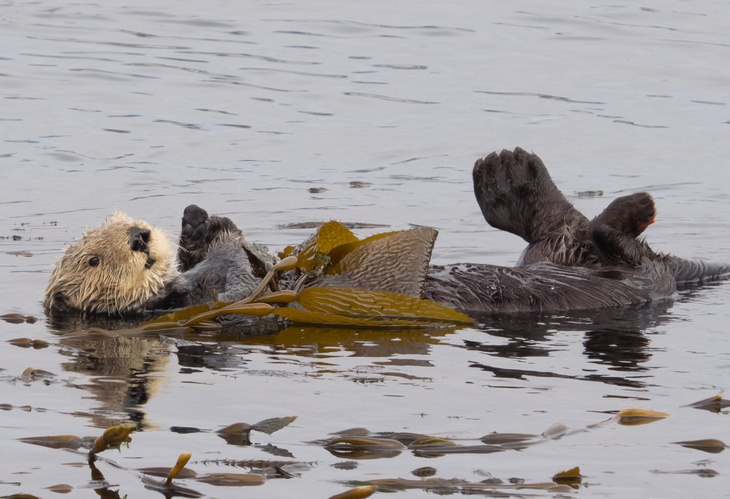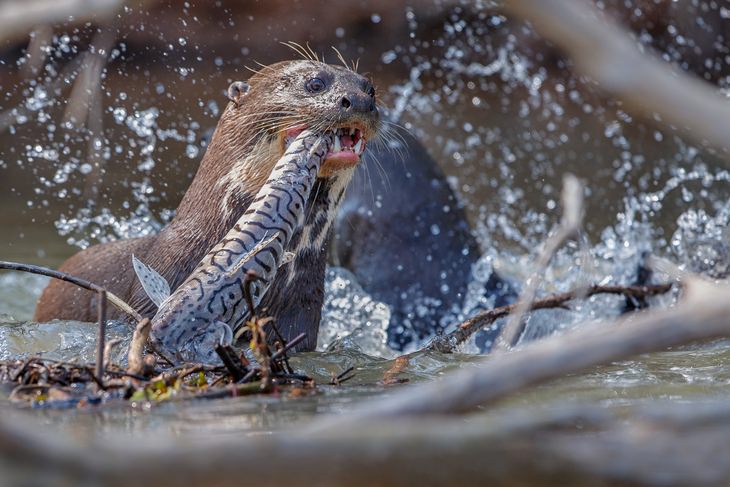1. Otters are Social Animals
Otters are mustelids, meaning they’re closely related to weasels, minks, badgers and wolverines. While most mustelids are solitary hunters, several types of otters (such as the North American river otter, the sea otter and the giant otter) form families and tribes. Sea and river otters form same-sex tribes, with male pups leaving the female group rather early on. Giant otters are somewhat more progressive and form heterogeneous packs that are led by an alpha that can either be a male or a female.
2. Otters Love Playing Games
As part of their social behavior, otters love to play. Play for most otters includes engaging in chases and play-wrestling, but can also include sliding on ice or mud, and one way an otter might choose to entertain itself is by juggling rocks across its chest and belly. Researchers don’t quite know why they do this, and some think sea otters do this to train. The problem is, otter groups that don’t normally use rocks as tools have also been documented engaging in this juggling game.
3. Otters Rock
Speaking of rocks, sea otters are among the few mammals that have demonstrated tool use in the wild. Most famously, they crack open clams by balancing a rock on their stomach and striking the shell against it. Some otters form an attachment to a specific rock and keep it handy in a pouch under the armpit for the entirety of their lives. So, yeah- sea otters have a pet rock.
5. River Otters' Unexpected Meeting Place
The river otter equivalent of the local pub is the latrine. Beyond other practical uses, the spot where otters defecate also serves as a meeting place for different otter tribes, where a young otter might choose which group to join. Funnily, one of the social behaviors otters seem to engage in is an inexplicable “dance” as they poop, where they raise their tales and stomp their hind feet. There does not appear to be an anatomical reason for this dance.
6. Otterly Fuzzy
Otters have incredibly dense fur, which helps insulate their body from the cold water and keep them dry and warm underneath. Sea otters actually have the densest fur in the animal kingdom, with around one million strands per square inch. Their fur is so dense that water cannot penetrate at all, and the air trapped within the fur assists in making the otters buoyant.
7. Keeping Afloat
Sea otter mothers are very protective of their young. Because otter pups are incapable of swimming, mothers will carry them on their stomach in a warm, loving hug. If a mother needs to swim away to gather food, she will search for a tangle of seaweed and wrap the pup in the kelp to anchor him in place. Adult sea otters will often hold hands to keep from drifting away as they rest.
7. Giving the Environment a Kelping Hand
Sea otters don’t just use kelp, they protect it. Sea otters are incredibly important to the conservation of kelp forests through their predation of invertebrates like sea urchins, animals that feed on seaweed. Without sea otters, the number of kelp-grazers would be unchecked, causing real environmental damage.
8. Not All Otters are Cute
Giant otters have short snouts with large nostrils, short, smooth-looking fur, webbed feet and large, menacing eyes. Admittedly, they’re not as cute as other otters, and their native names reflect that: in the Brazilian Tupi language they are called “water jaguars”- and for good reason. Giant otters are apex predators who feed primarily on fish (including piranhas) but have also been documented hunting and killing caimans and anacondas.

